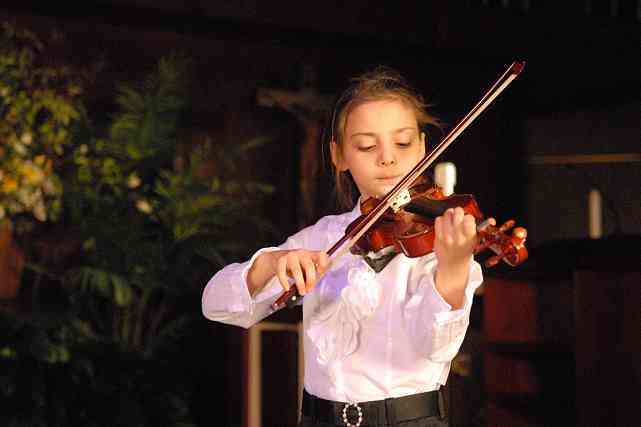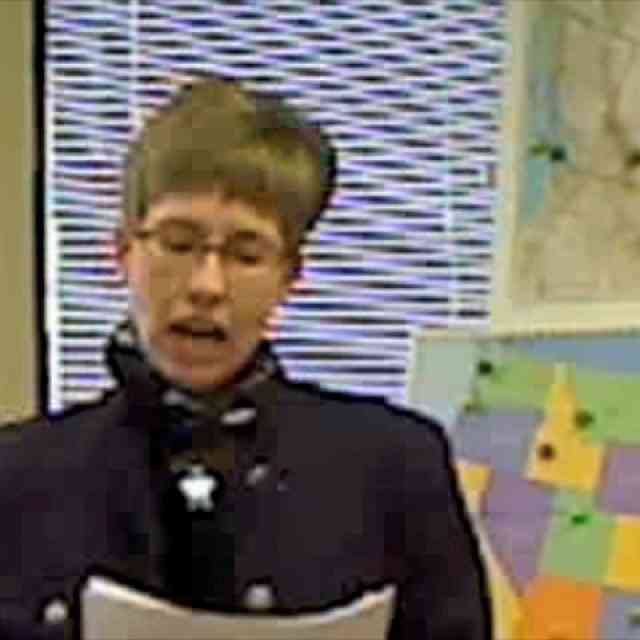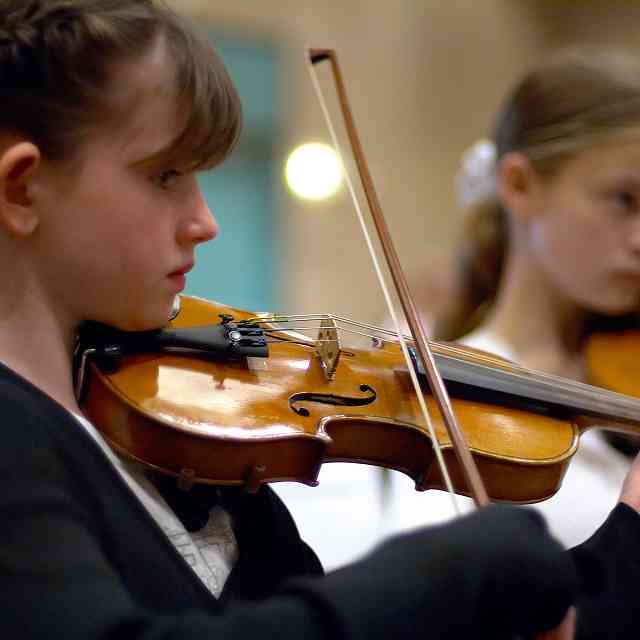
Amparo Guyot at the 2008 SAA Conference
“Tone has a living soul without form.”
When I traveled to Matsumoto, Japan, in 1986 to study with Dr. Shinichi Suzuki, I packed so much music in my head and in my violin case. I was only to be there for a few weeks but I was told we would have daily lessons and I wanted to be very prepared. I was in college at the time and it was important to me to be considered an advanced student and play my hardest repertoire for “proof, so I brought three major concertos and several pieces by Kreisler and some unaccompanied Bach, just in case.
At our first lesson I chose Praeludium and Allegro because Fritz Kreisler was one of Dr. Suzuki’s favorites. I played with quite an excess of adrenaline and was greatly anticipating what Dr. Suzuki would say. When I finished playing Dr, Suzuki smiled and laughed a little and thanked me for playing. He said, “This is a very good piece for you.” Then we got to work, playing one note.
The note was G. It was third finger on the D string. He plucked the note and waited a very long time until the ringing had dissipated, then he did the same thing with his bow. He had me try this same thing. We did this over and over without much talking. It occurred to me after the 12th try that the release of the note was just as important as the time spent playing the note. I started relaxing as I was trying less to perform and more to just revel in the ring and release. The less I tried the better the sound the more I wanted to do this. I enjoyed this circular effect.
Dr. Suzuki was 87 at the time but his energy and enthusiasm were more like someone in their 20s. I think Dr. Suzuki aged in “dog years.” Even though he had sustained a shoulder injury years earlier he could sing that note so purely through his instrument. Each lesson was similar; we played that note, back and forth for the next several lessons. Sometimes I would get to play a phrase or two of Chorus from “Judas Maccabeaus” while feeling, seeing, hearing and sharing the same ring. Dr. Suzuki was so excited as he patiently waited for more resonance. There seemed no doubt to him… it was in there, an endless supply of ring, and I would find it. Maybe it would be today, maybe tomorrow and maybe next month when back home in DeKalb, Illinois—I would find more and more resonance.
I have to admit; sometimes I was a bit antsy to play more repertoire. I wanted more secrets and tricks for off-the-string bowings. I kept practicing my one note, sometimes not sure I was getting anywhere and sometimes getting to a Zen-like state where I quieted my brain and became one with this note. I was encouraged in the class when I started hearing a deepening to my sound and the “ahhs” from fellow classmates at our shared masterclasses. I heard this blossoming of sound in others and loved hearing more when I had thought the maximum ring was reached on the previous note. I enjoyed the unity of this quest.
On the last week of my stay I was privileged to hear Ken Selden’s graduation. He had been studying with Dr. Suzuki for two years and performed the Beethoven “Kruetzer” Sonata as well as several pieces from early Suzuki books. This performance was my “ah ha” moment. Something in the way Ken traveled effortlessly up and down the bow finding a “pinging” resonance in every single note. It was not what Ken played, but how he played it that struck me. I felt electrified by the vibrating strings; I understood why this work is so important. This is the purest form of communication. Our tone reflects our self-expression and connection to the world. The “Living Soul” Dr. Suzuki speaks of is created from the musician, the instrument, the teacher, the composer, the listener and all of humanity that craves its beauty. This pure sound is not owned by the musician but lives independently in our hearing and then heart, however deeply we choose to accept it. Much like love, tone has no form. It cannot be contained and is best expressed when released and shared.
Since my time in Matsumoto I continue my unending quest for more resonance both for myself and for my students often by using this one note from Dr. Suzuki. This note has centered me and the child and the parent to a safe and supportive place in only a few bow strokes as we begin Tonalization. This resonance work has repeatedly eased headaches and tension issues. This kind of tone has made me cry at its beauty, coming as honestly from a child’s polished Twinkle to an adult’s mastered Mendelssohn Concerto. A ten-year-old student commented just two weeks ago, “Miss Ann, our tone is never “done” is it—it can always grow deeper, can’t it?” I was pleased Paul had realized that “Tone has a Living Soul” a lot sooner than his teacher.









